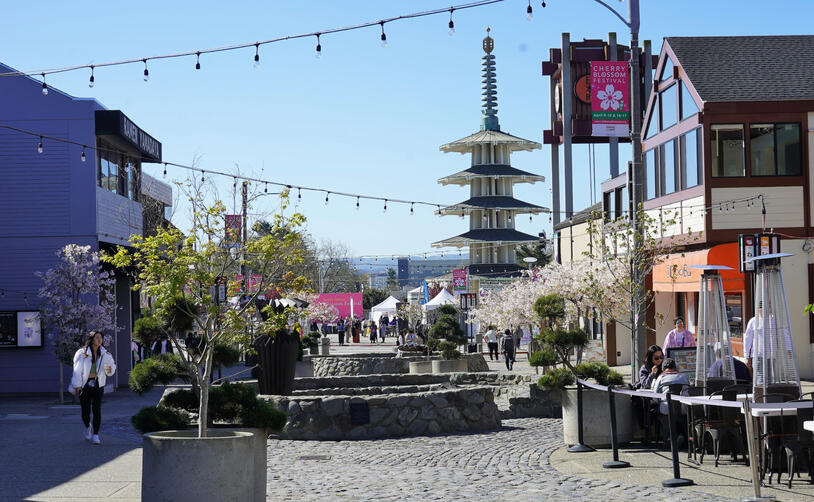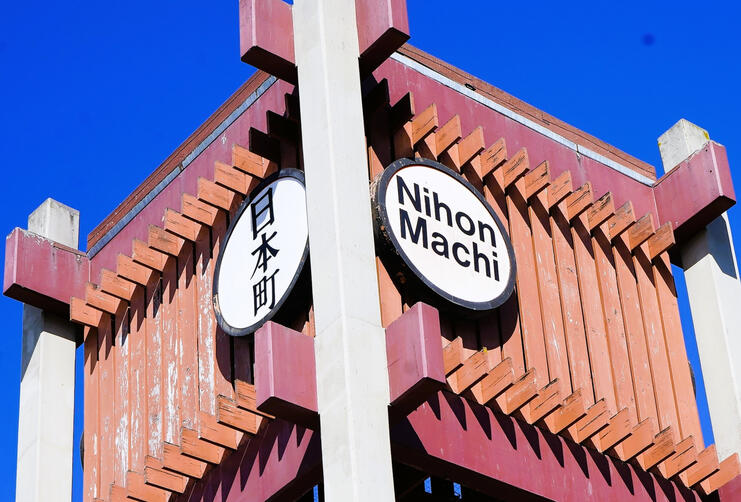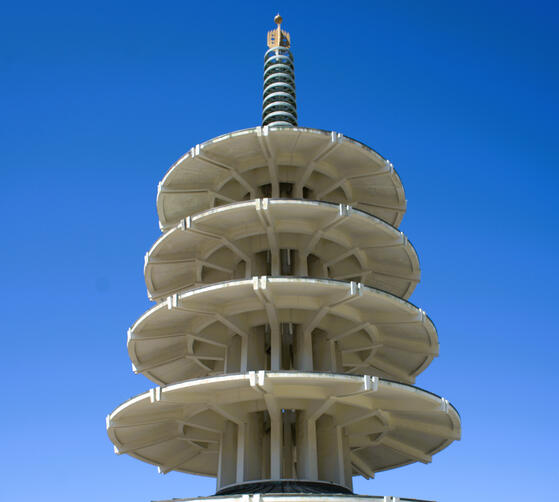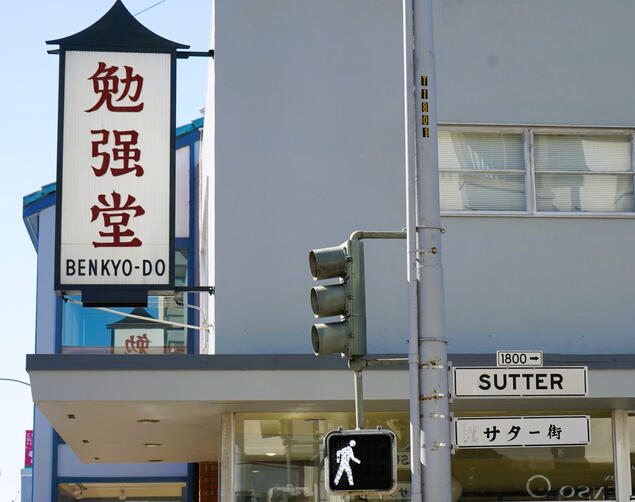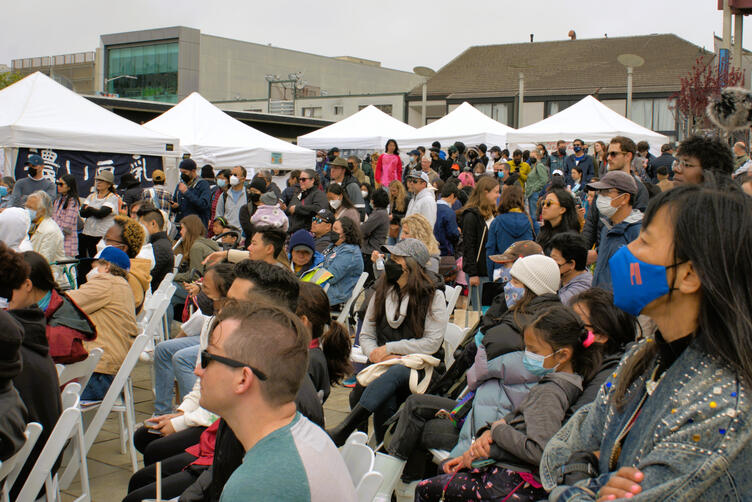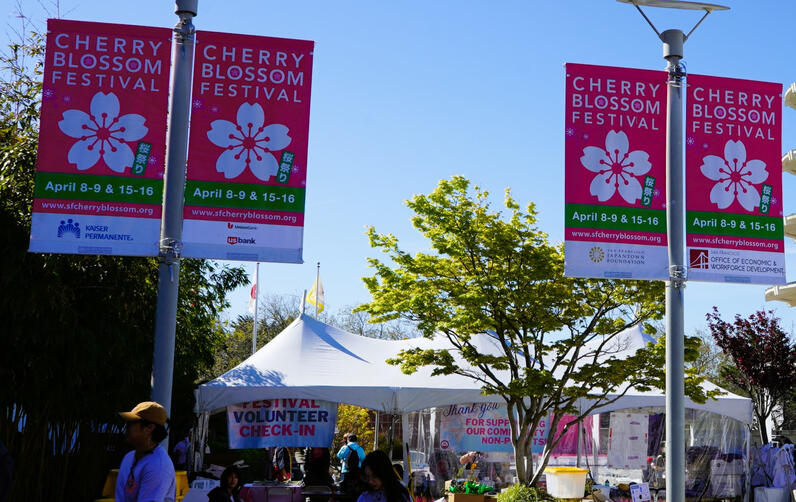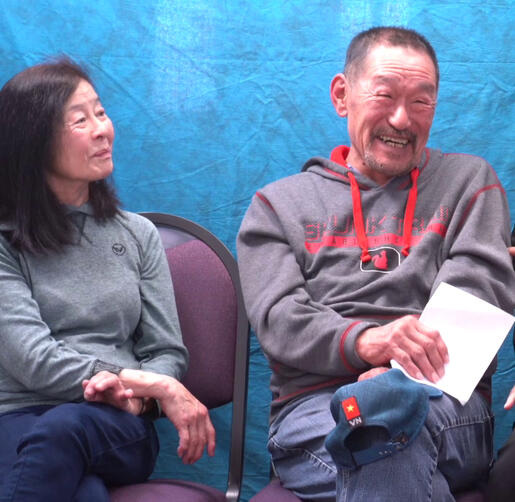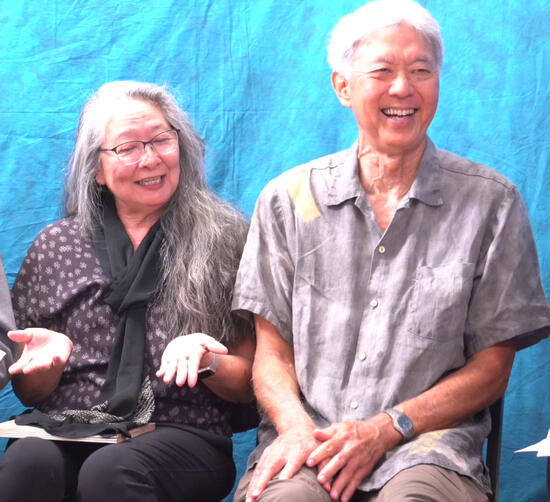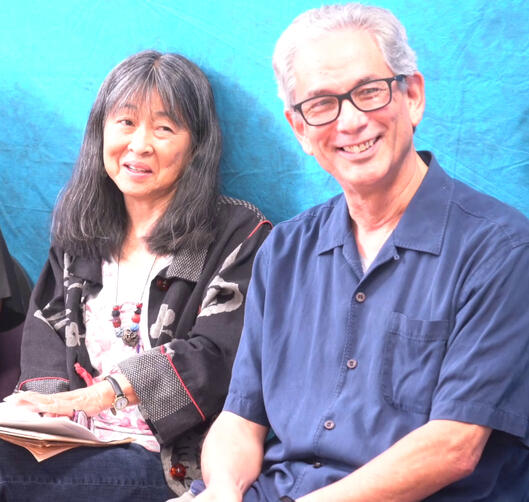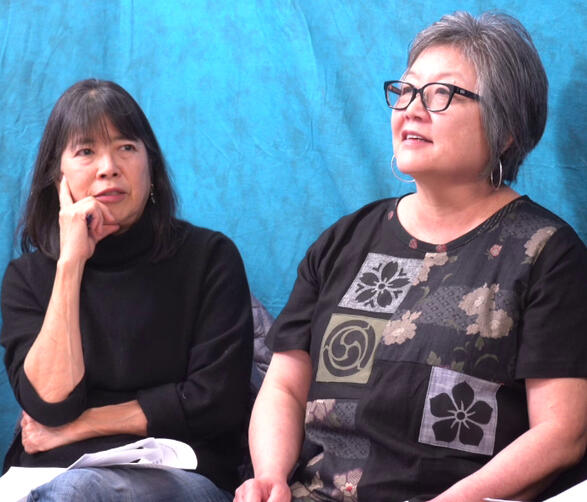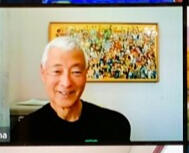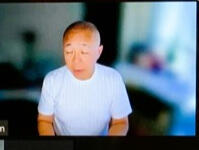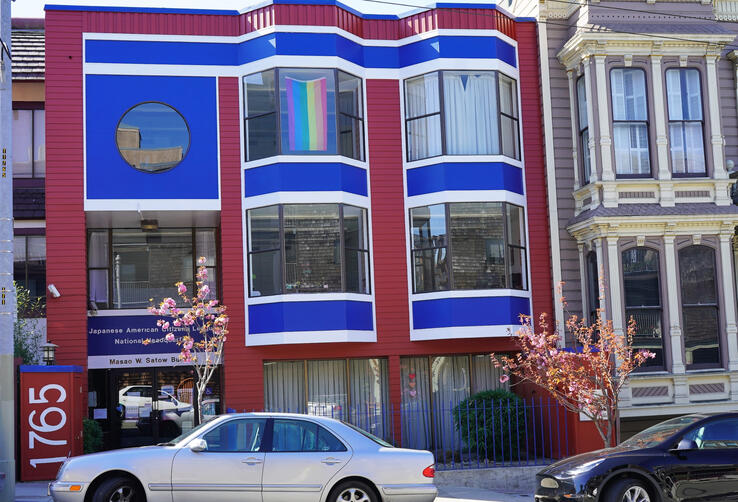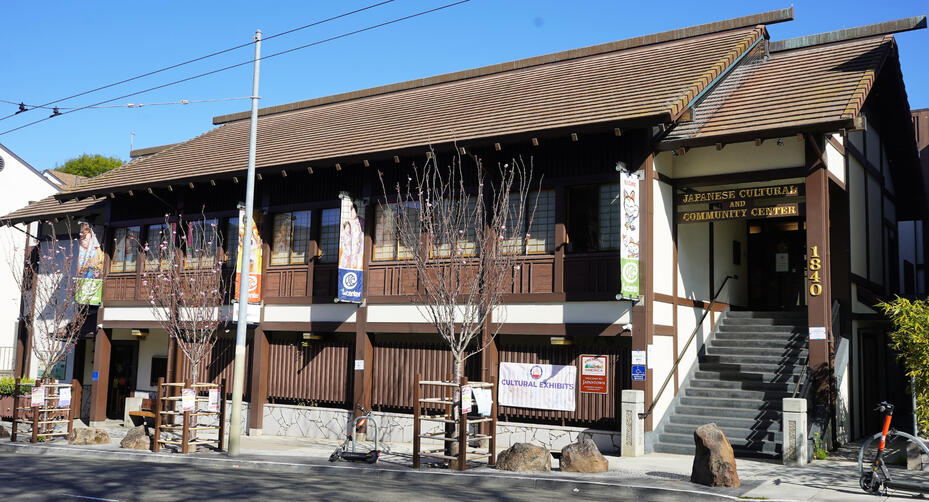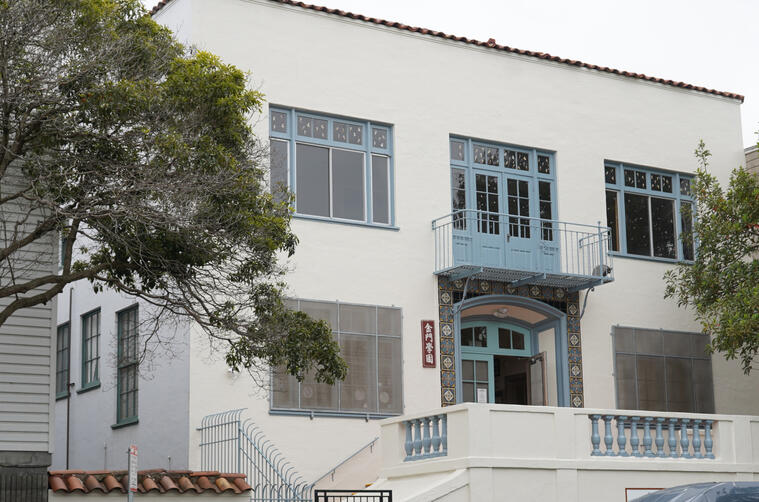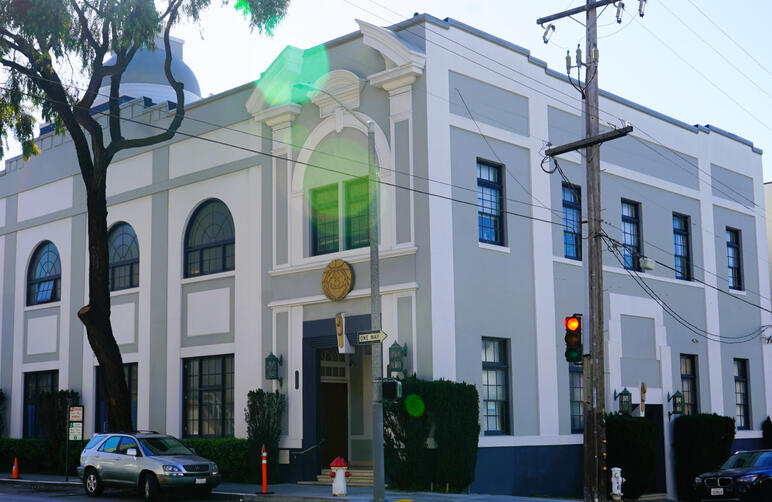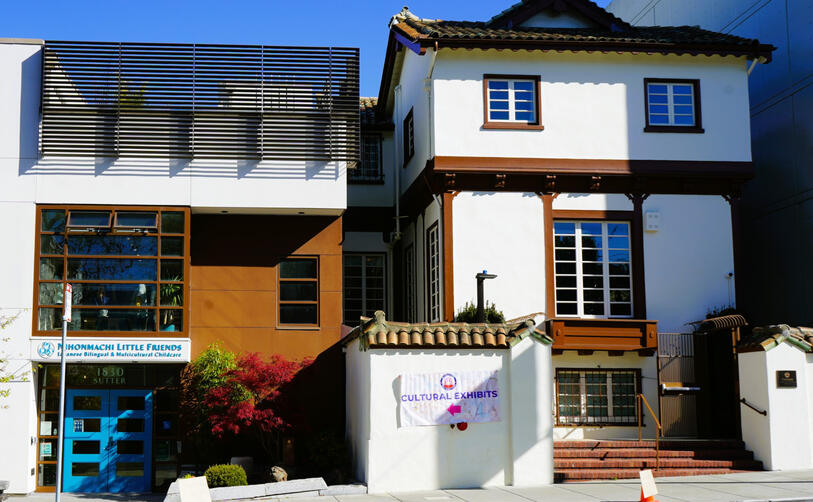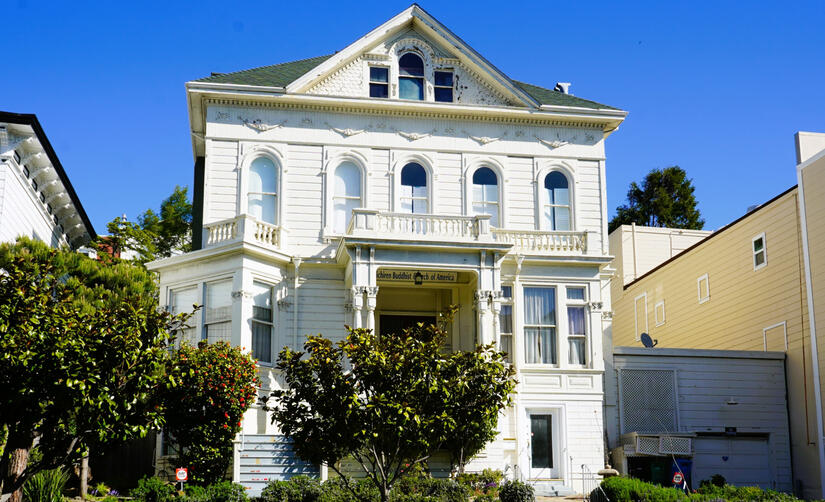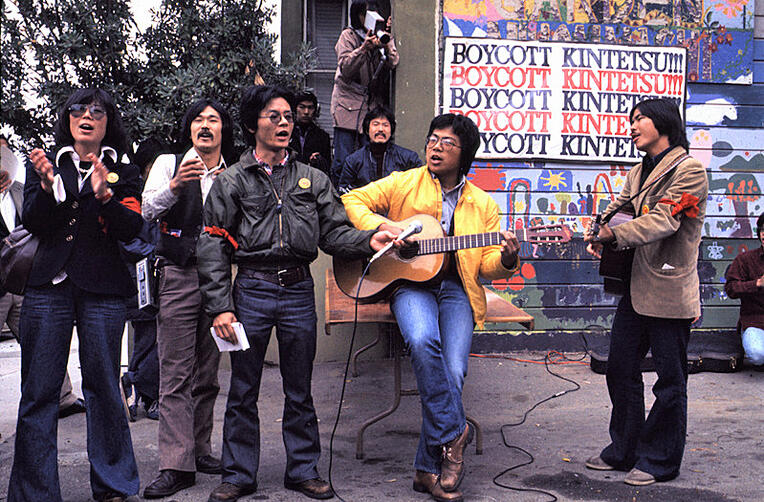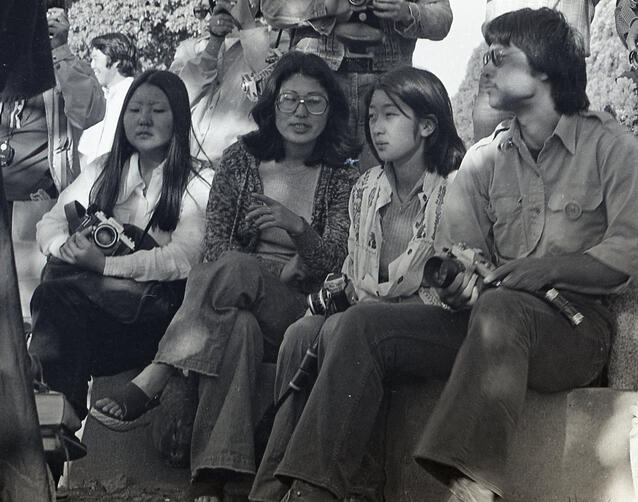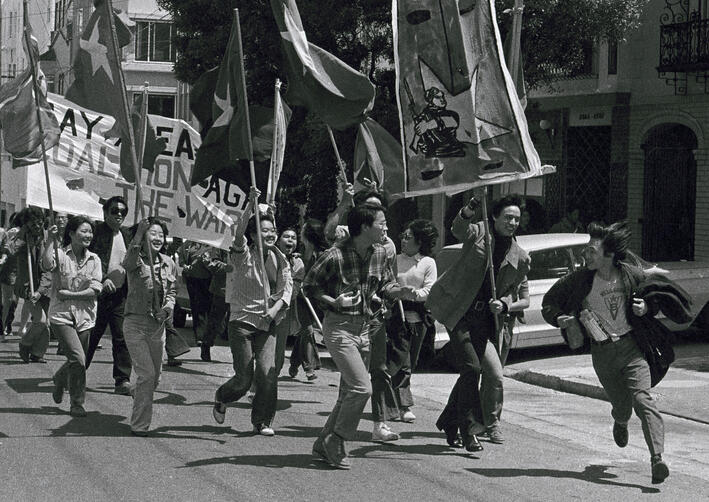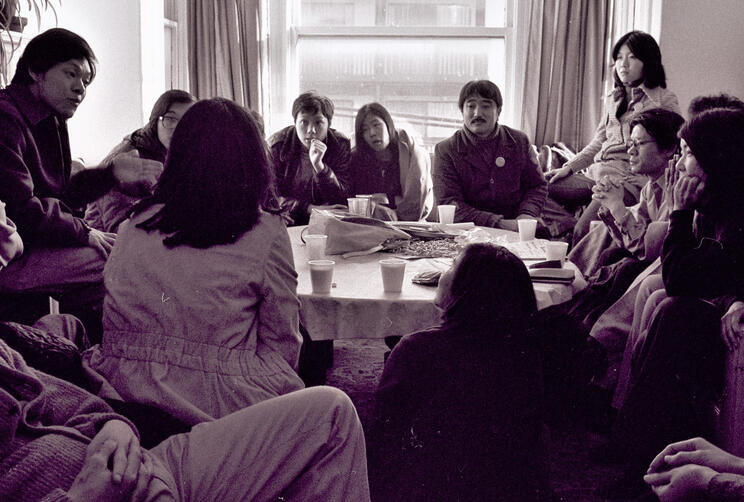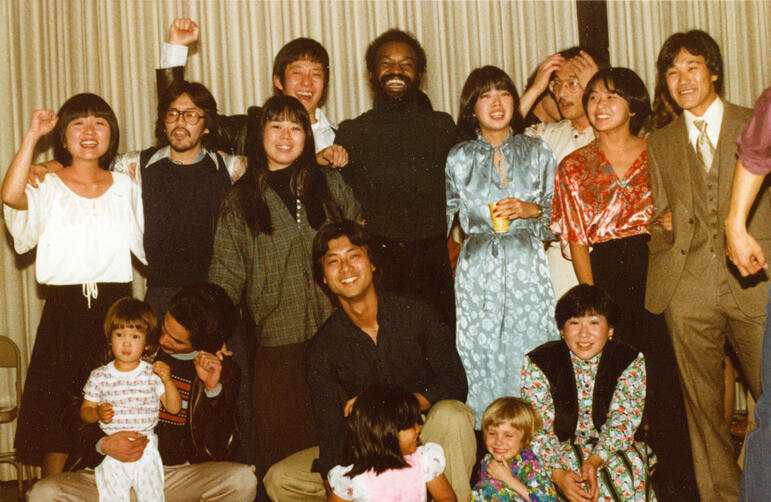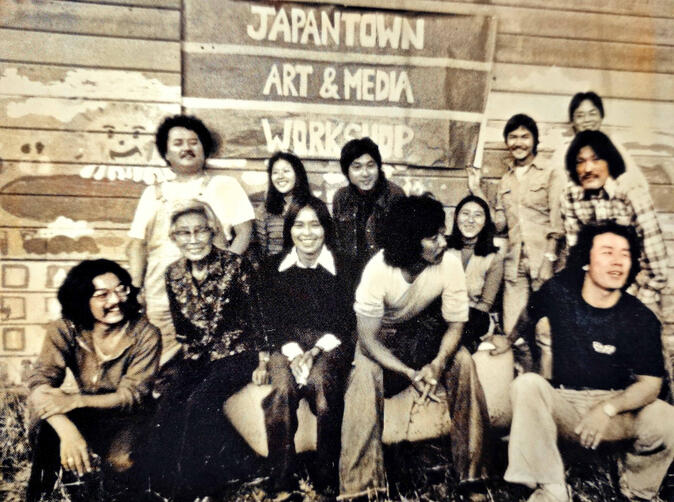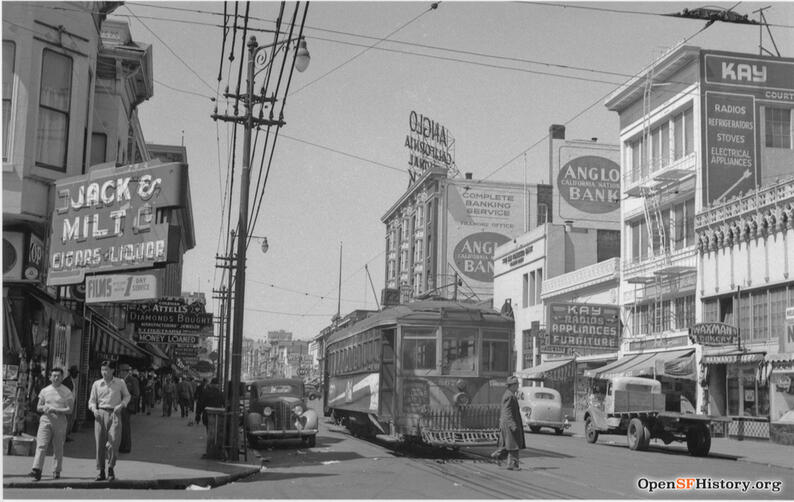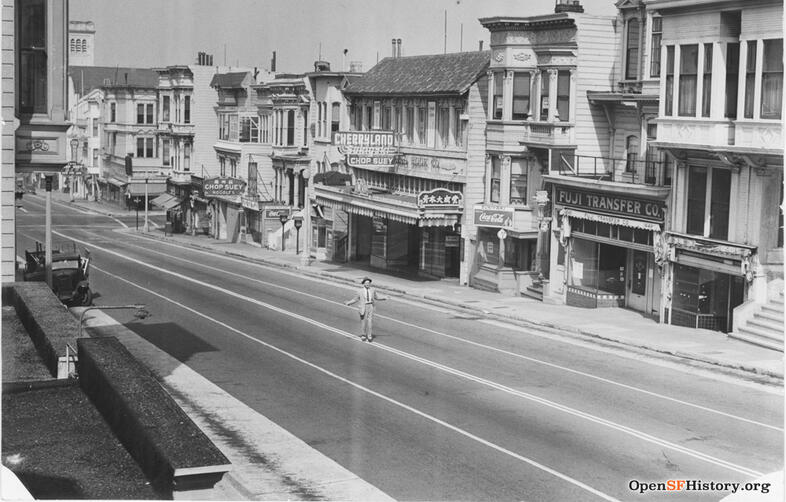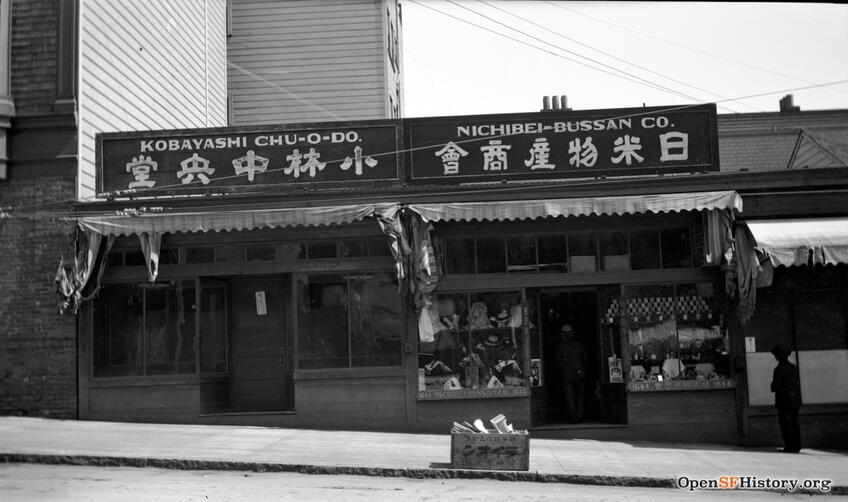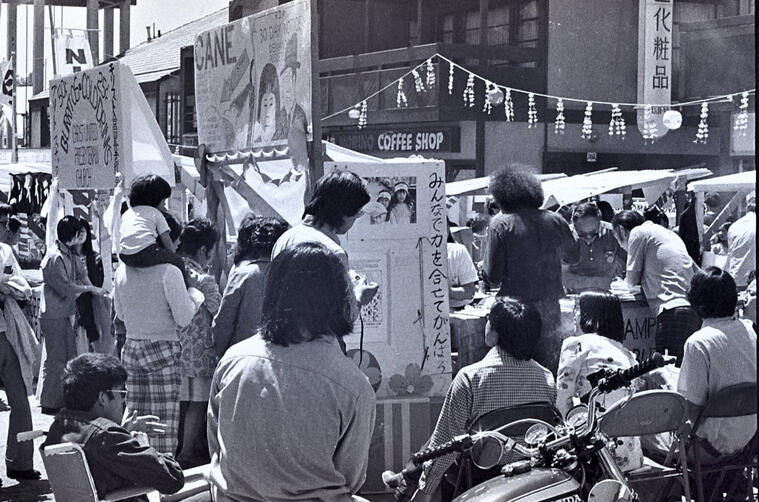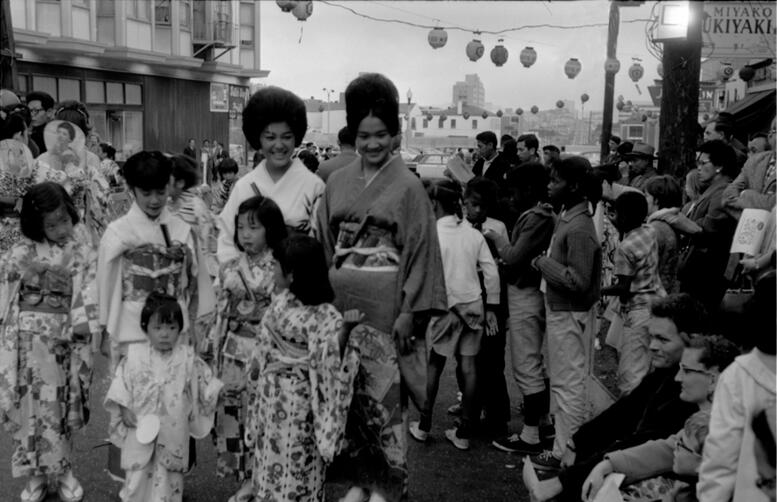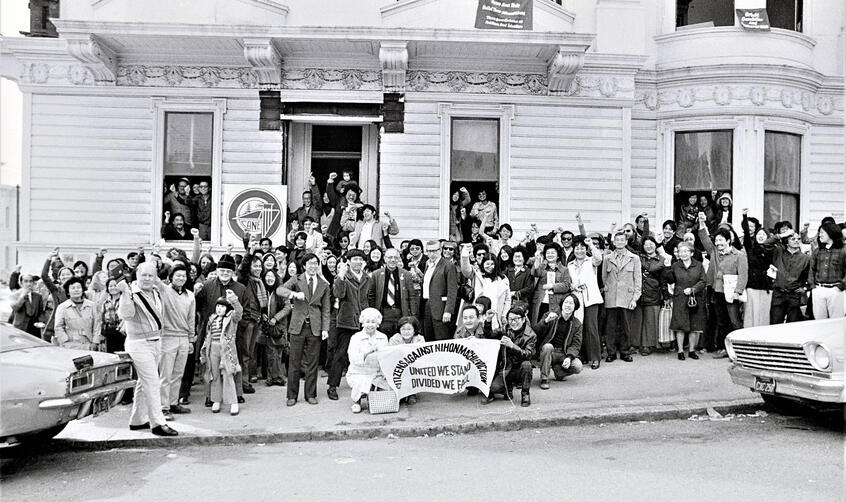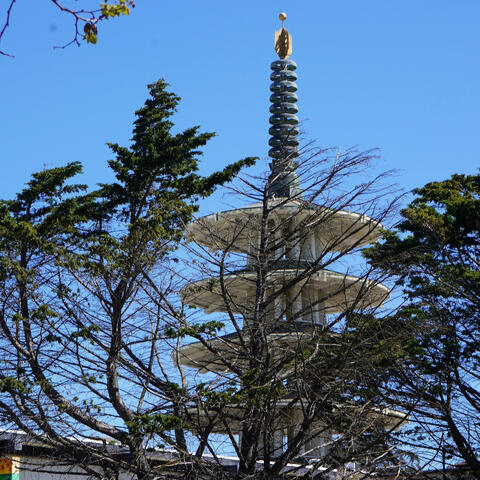
It's Our Time, It's Our Heritage
Sansei Legacy Trust Fund
Preserving San Francisco's Nihonmachi,
Preserving Our Home
Why We Need a Fund
The goal of the Sansei Legacy Trust Fund is to preserve San Francisco's Nihonmachi, the earliest urban Japanese settlement in the United States. But its future is uncertain as its historic significance may end up in name only and its cultural heritage serving a tourist economy. We are a multi-generational movement comprised of those who care deeply about Nihonmachi and understand the importance of community ownership of our buildings and land.Our purpose is help community members to retain control of Nihonmachi in order that it serves those who consider it home, of our culture, our faith, heritage, small businesses and social activities. We've learned from the tragic lessons of redevelopment how the lack of local ownership can destroy the fabric and soul of a thriving neighborhood. In 1955, Nihonmachi stretched 25 blocks. By 1965, it stood at only four, confiscated by eminent domain and corporate developers.In 2017, the City of San Francisco acknowledged the illegal dispersal and destruction caused by redevelopment. They have gone so far as to state they'd like to "knit" back the community. Beyond mere apologies, the Sansei Legacy Trust Fund, believes the city must provide reparations for the reconstruction of Nihonmachi with utmost expedience. This is an important related goal, and we're eager to work with community groups and individuals. We hope all Sansei will support these efforts financially and get involved - and to encourage your children - because Nihonmachi needs everyone to participate in its future direction.The funds will be used in collaboration with community groups working to upgrade buildings for uses that benefit community services. and construct affordable housing and retail spaces.
We're asking all Sansei to make a contribution, $100 and up, to assure the presence of San Francisco's Nihonmachi for our children, their children and for generations to come.
(Please see the Donate Section)We hope that one day, all the regions that were forced to shutter their Nihonmachis will have a chance to restore their communities and welcome back their heritage.
We believe the Sansei Legacy Trust Fund is a step in that direction.
About Those Behind this Initiative
The Sansei Legacy Trust Fund was initiated by the organizing committee for the 50th Anniversary of CANE - the Committee Against Nihonmachi Eviction - in August of 2023. We saw this event as both a celebration of the past and a catalyst for what we heard from the community over the past two years: the desire for sovereignty of Nihonmachi by the people and for the people. Too often the voices of the community have lacked true power at the table. We've been provided with token incidentals to keep some satisfied while the majority remain excluded. It reminded us of 1973 when commitment and direct action, resulted in real solutions.Pictured above is our organizing committee. Top row: Kitty Mah, Mickey Imura, Joan Takano, Tracy Takano, Lucien Kubo, Kim Geron, June Hibino, Joyce Nakamura. 2nd Row: Jeanie Hibino, Ken Yamada, Boku Kodama, Steve Hom and Donna Kotake.We launched this fund with every one on the organizing committee pledging an initial investment to get the ball rolling. The Japanese Community Youth Council (JCYC), a 501(c)(3) nonprofit agency, is our fiscal agent in this starting period. You can see more about JCYC in the next section entitled Donate.The Sansei Legacy Trust Fund is overseen by a board of trustees.
We invite those from the community to apply for the board.
How to Donate
We hope this project resonates with you even if you're not a Sansei because Nihonmachi belongs to everyone. We hope you'll contribute to the on-going effort to preserve Nihonmachi. The main purpose of the Sansei Legacy Trust Fund is to secure funding to rehabilitate community service buildings in Nihonmachi as well as future affordable housing projects.We see our first project as the rehabilitation of the auditorium of Kinmon Gakuen to provide a performing arts space so badly needed in Nihonmachi. Future needs include affordable housing and retail spaces through a land trust project. We are also supporting the Japanese American Religious Federation's potential project for low cost housing.To Donate, click the Donate button below.
Once on the site, scroll down and click on "How should we use your donation?"
Find Sansei Legacy Trust Fund" and input an amount.
Sansei Roots
The Sansei generation is deeply rooted in the Civil Rights and Anti-War Movements of the 60s and evolutionized in the fight to preserve our Nihonmachis in the 70s. We were down to the last three J-towns when once there were over 40 in the Western United States.The Issei and Nisei generations created every Nihonmachi in America and contributed financially to uphold the community. But every Nihonmachi was lost when racism and mass hysteria put our parents and grandparents into World War II concentration camps. After the war, they worked tirelessly to reestablish their community only to be evicted again by urban renewal just a decade after leaving the camps. The financial losses were immense once more. So was the loss of home comfort and safety. Culture and heritage were callously trashed by the government evictors.The Sansei were victimized by this second wave of forced evacuation as our Nihonmachis were destroyed by redevelopment, resulting in many cases, the gentrification of our generation whether we lived in a Nihonmachi or not. It was then, we came of age.Today, the Sansei have been limited in our fiscal contributions to the wellbeing of our Nihonmachis, mainly due to the country's economic instability. But today, our Nihonmachis need our help more than ever. Unless we take majority control of our Nihonmachis, they may be further controlled by outside interests using our heritage in name only for their profiteering.We're encouraged by the results in LA's Little Tokyo and the efforts working in San Jose, Sacramento and Salt Lake City to retain/revive our historic communities. Even if you've not been a part of San Francisco's Nihonmachi, its importance in the annals of Japanese in America must be kept alive for all Americans. Just about every Asian immigrant's first step on US soil came by way of Angel Island, San Francisco's South Park and in 1906, Nihonmachi.
Brief History of Nihonmachi
The first Japanese emigrated to the United States during the Meiji Period from 1868 to 1912.
Coming to America held the promise of opportunities and riches. Many had visions of working hard for a few years and returning home to live comfortably. Instead, the reality was backbreaking work, poor wages, exploitation, and racist laws.Out of necessity, Nihonmachis were established, offering a bit of home and sanctuary from surrounding hostilities. They were the social centers for both young and old, providing tradition, culture, food, religion, goods and services.If not for the color of their skin and the names on their storefronts, Nihonmachis were very much like any other American neighborhood.In San Framcisco, the original Japanese immigrants settled in South Park and Chinatown, but the 1906 earthquake forced the community to relocate to the western most outskirts of San Francisco to what was to become “Nihonmachi” (or Japanese Town) until World War II. It resided in the “Western Addition” as the neighborhood was called, situated far enough to segregate immigrant German Jews, Japanese, Hispanics, Filipinos and other people of color from the city’s white neighborhoods.At one time, there were 43 Japantowns in California. But with the forced removal and imprisonment of all Japanese from the West Coast, by June of 1942, EVERY Japantown had become a ghost town.At the end of World War II, as many Japanese returned home, those returning to San Francisco worked tirelessly to reestablished their community. In ten years, Nihonmachi was just as large and nearly as populated as pre-war. But the unthinkable happened again. Instituted by the federal government in the name of urban renewal, Nihonmachi along with the rest of the Western Addition was demolished and left to rot for 10 years.Those in the community were left out of the planning process even though they had the greatest interest to revive their neighborhood. Instead of sparking a renaissance, the City gave away 80 percent of Nihonmachi to outside investors whose only interest was profits and investments, not the improvement of Nihonmachi for the people who had called it home for half a century.Our history books will call it the second forced evacuation. In 1955, Nihonmachi comprised of 25 blocks. By 1965, the neighborhood was down to just four. In 1973, the community finally fought back and for the next decade every inch of the final four blocks was contested by a community which fought in the streets, in the courts and in the media for its right to control its destiny. It was under these conditions that the Sansei came of age.
